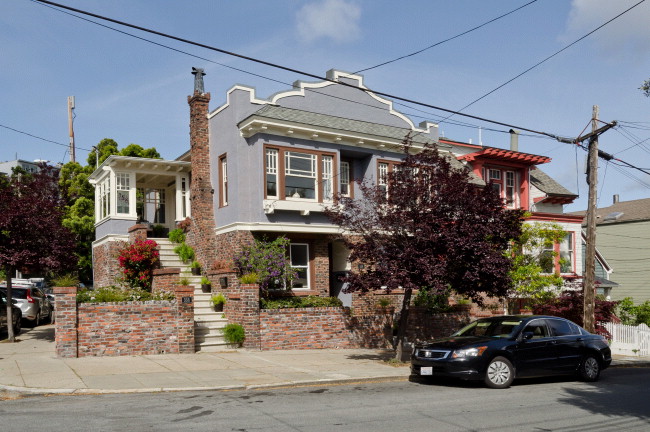When we bought our tenant-occupied two unit building back in 1998 before I became a realtor, we never realized what a nightmare trying to move into our own home would be. Even in San Francisco, in a majority of instances, owners have the right to move into their own home! This can be done by way of an Owner Move-In Eviction or OMI. We bought our building planning to move into the lower “garden” unit and live in our new home indefinitely. When we bought the building, we were given the impression by our agent that a simple 30 day OMI notice would result in the tenant leaving. We did not anticipate that the tenant, who had no grounds, would fight the OMI. Intending to make it our primary residence, we were acting in good faith, yet he fought us every inch of the way.
Why? Because he could live rent-free until the sheriff booted him out. In San Francisco, once the tenant is served with an OMI notice, as owner, you can no longer collect rent, no matter how long it takes him to move out! If you collect rent, the law says you are demonstrating that you accept this person as your tenant. How long did it take? It took more than 11 months to get him out. And in case you are feeling a little sorry for him, we soon discovered that he had been renting out bedrooms to roommates, making money on the deal! Also, he had at least 5 aliases; seems like he might have done something like this before. Even though this was an easy case to win and we got a judgment against him because the law and facts were clearly in our favor, that judgment would be hard to execute on someone who has so many names and little ownership of property. So, more than $15,000 later (1999 dollars), we got him out.
The requirements for an OMI eviction are that an “owner must have a present intent to establish a principal place of residence within three years of gaining possession of the property, and thereafter occupying the unit as the owner’s principal place of residence for at least the next three consecutive years.” This clearly applied to us. There are some exceptions to the OMI rule, none of which applied to us. These exceptions relate broadly to “protected tenants,” and how the law defines “bad faith” evictions.
If the tenant residing in the unit is a protected tenant, then the owner cannot do an OMI. “A tenant is protected from an owner move-in eviction if he or she falls into one of three ‘protected’ classes: tenants who are 60 years of age and have resided in the rental unit for 10 years or more; tenants who are disabled and have resided in the rental unit for 10 years or more; and tenants who are catastrophically ill and have resided in the rental unit for 5 years or more. This protection does not apply to tenants in a unit which is the only unit owned by the landlord in the building, or to single-family homes.”
With respect to “bad faith,” if someone is naïve enough to do an OMI and move out in less than three years, the legal presumption is that this person has acted in bad faith and can be subject to a wrongful eviction lawsuit, which could result in substantial monetary damages – this to be avoided at all costs!
I relate this story because I think it is important for people who are buying to know. As a realtor, I always let my buyers who are considering buying a tenant-occupied property know that if they think they can move into their home by just serving an OMI on a tenant, it’s not that simple. One must be aware of the potential costs and time. Some tenants do move after the requisite notice, but others may not. Fortunately, we had someplace else to live during that year but everyone is not so fortunate.
Sections above in quotations are excerpted from Jeanne Grove and Arthur Meirson, “Tenant Evictions in San Francisco” g3mh Real Estate Law Journal June 2013 Edition, 3.



